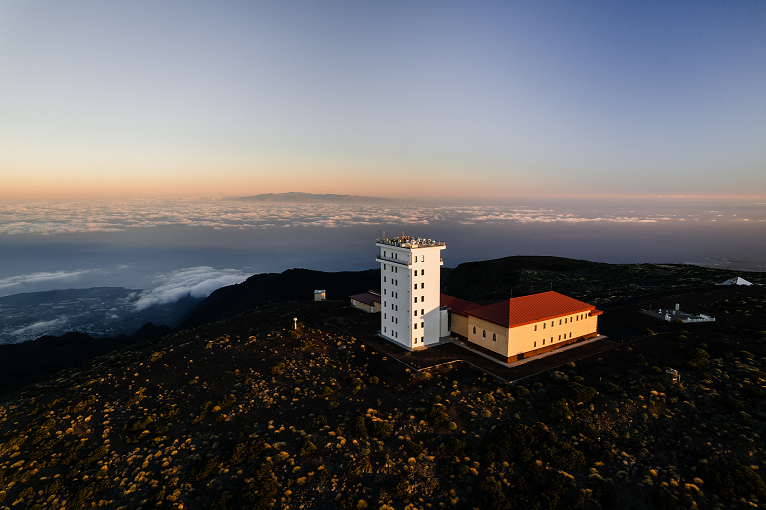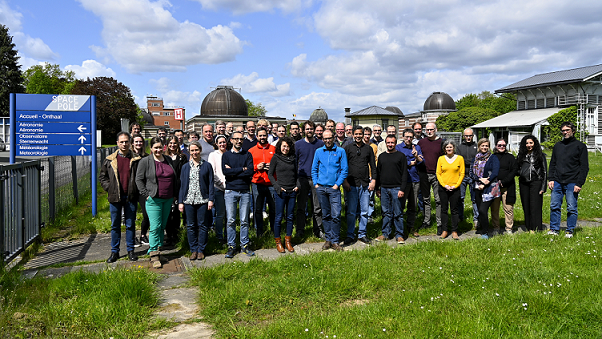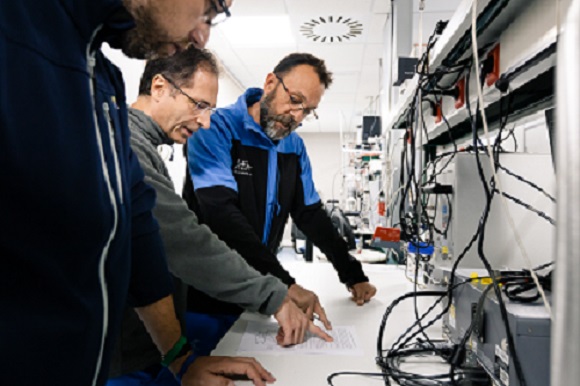The Izaña Observatory is the first station in the ICOS-Spain national network to complete its certification process.
The Integrated Carbon Observation System (ICOS) General Assembly, held on 22-23 May 2023 in Malmö (Sweden), unanimously agreed to incorporate the Izaña Observatory as a fully-fledged station in its network. ICOS is a network funded by the European Union and member countries that aims to improve knowledge of the carbon cycle in the Earth-atmosphere system and its response to climate change, allowing progress in compliance with the Sustainable Development Goals of the United Nations and the Social Challenges of the European Union [1-3]. For this purpose, the stations of this network, which cover the atmospheric, oceanic as well as ecosystem domains, carry out highly precise and continuous measurements of the main greenhouse gases.
Spain officially joined ICOS in 2021, after its membership application was approved in November 2020. The national network, ICOS-Spain, is formed by the QUIMA group of the Institute of Oceanography and Climate Change belonging to the University of Las Palmas de Gran Canaria (ULPGC), the National Institute for Aerospace Technology (INTA), the Oceanic Platform of the Canary Islands (PLOCAN), the Spanish Oceanographic Institute of the Higher Council for Scientific Research (IEO-CSIC), the Center for Environmental Studies of the Mediterranean (CEAM) and the State Meteorological Agency (AEMET), which is also responsible for the technical coordination of this network.
The national node began its integration in ICOS with 3 stations. Currently, 4 stations are in the process of certification, in addition to the atmospheric station of the Izaña observatory, which has completed this process. The unanimous agreement reached at the ICOS General Assembly represents a complete success for ICOS-Spain and the Izaña Observatory because it confirms that this atmospheric station has managed to successfully complete the demanding certification process established by ICOS. This detail certification process began with the proposal of the Izaña Observatory as a site of scientific interest for ICOS, a matter that was quickly resolved since this observatory participates in the World Meteorological Organization - Global Atmosphere Watch Programme (WMO-GAW), and its series of observations of carbon dioxide (CO2) and methane (CH4) have been uninterrupted from 1984 to the present day. The location of the high mountain Izaña Observatory, at 2373 m.a.s.l., ensures that its measurements are representative of free troposphere background conditions of the North Atlantic subtropical region for several hours a day.

Figure 1. Overhead view of the Izaña Observatory and the sea of clouds caused by the thermal inversion in the lower troposphere atmosphere, which takes place in the Canary Islands region. This inversion occurs most days of the year, preventing air masses with anthropogenic emissions from reaching the observatory (©ICOS-ERIC).
The second stage of this certification process is to certify that the instrumentation implemented in the station meets the ICOS accuracy requirements. The two instruments installed in Izaña Observatory for ICOS measurements (Picarro G2401 and LGR 9070015) were sent to “ICOS Atmospheric Thematic Centre (ATC) Metrology Lab” managed by the "Laboratoire des Sciences du Climat et de l'Environnement" in Gif -sur-Yvette, France, where for several months they were subjected to rigorous operational and calibration tests to check their accuracy. In relation to the calibration part, 16 cylinders (tanks) approved by ICOS were purchased and sent to the “Flask and Calibration Laboratory (FCL)”, managed by the “Max Planck” Institute in Jena, Germany, which supplies the ICOS reference gases.
The last phase of the certification process was the most complex because during six months it was verified that the acquisition and subsequent sending of data to the ATC was correct. In this way, the capacity and experience of the researchers in charge of the programme to carry out a weekly control of the quality of the data to determine which data will finally be published by ICOS were evaluated by means of teleconference meetings with the ATC.
In addition, participation in the atmospheric Monitoring Station Assemblies (MSA) was initiated, where the ATC and station researchers meet to discuss, among other things, the status of the atmospheric station network and the evaluation of their instruments. Figure 2 shows the attendees of the MSA held in Brussels (Belgium) on 15-17 May 2023.

Figure 2. Participants in the atmospheric Monitoring station Assembly (MSA) assembly held in Brussels (Belgium) from 15 to 17 May 2023. Pedro Pablo Rivas and Sergio León attended as representatives of the Izaña Observatory (©ICOS-ERIC).
Pedro Pablo Rivas is the principal investigator of the GAW and ICOS greenhouse gas programmes, who together with Sergio León carries out the evaluation of the ICOS data from the Izaña Observatory, and is in contact with the ATC. Ramón Ramos, Head of the Infrastructure and Instrumentation of the IARC, with the recent incorporation of Enrique Reyes is responsible for solving all instrumental aspects of the Izaña Observatory ICOS Programme (see Figure 3). Omaira García, head of the Fourier Transform Spectrometry Research Programme, which includes measurements of greenhouse gases in columns, and Emilio Cuevas, coordinator of ICOS-Spain, are scientific advisors to this programme. The essential contributions of Tomás Martín in process programming tasks and Jaime Hernández in calibration tasks, both from Air Liquide, and the GAW technicians from AEMET, Virgilio Carreño, Concepción Bayo, Cándida Hernández and Antonio Alcántara, for their daily checks of the instrumentation.

Figure 3. (Left to right) Sergio León, Pedro Pablo Rivas and Ramón Ramos at the Izaña Observatory with the ICOS instruments (©ICOS-ERIC).
This certification shows the commitment of the Izaña Observatory researchers to obtain highly accurate and continuous measurements of the atmospheric concentration of greenhouse gases. Furthermore, thanks to this certification, AEMET, through the Izaña Observatory, joins a group of European research institutions committed to the study of greenhouse gases and climate change and whose public domain data will help establish and validate European policies to mitigate the impact of climate change.
ICOS recently published a report on the Izaña Observatory following the news that the Mauna Loa Observatory temporarily stopped measuring CO2 as a consequence of the impact of the Mauna Loa volcano: https://www.icos-cp.eu/event/1268
ICOS has just published a spectacular video about the Izaña Observatory entitled: "Izaña: The Observatory above the clouds": https://f.io/o-yRVOL5
References:
[2] https://www.horizonteeuropa.es/anteriores-programas/h2020/retos-sociales
